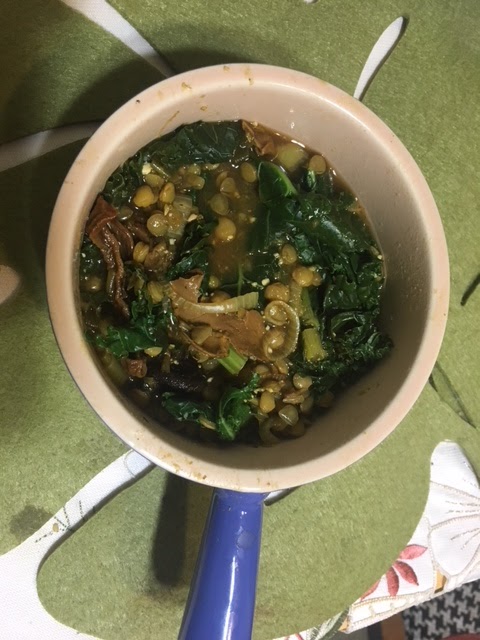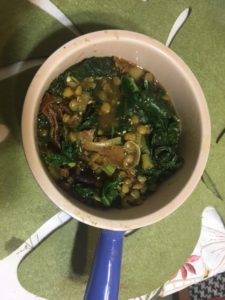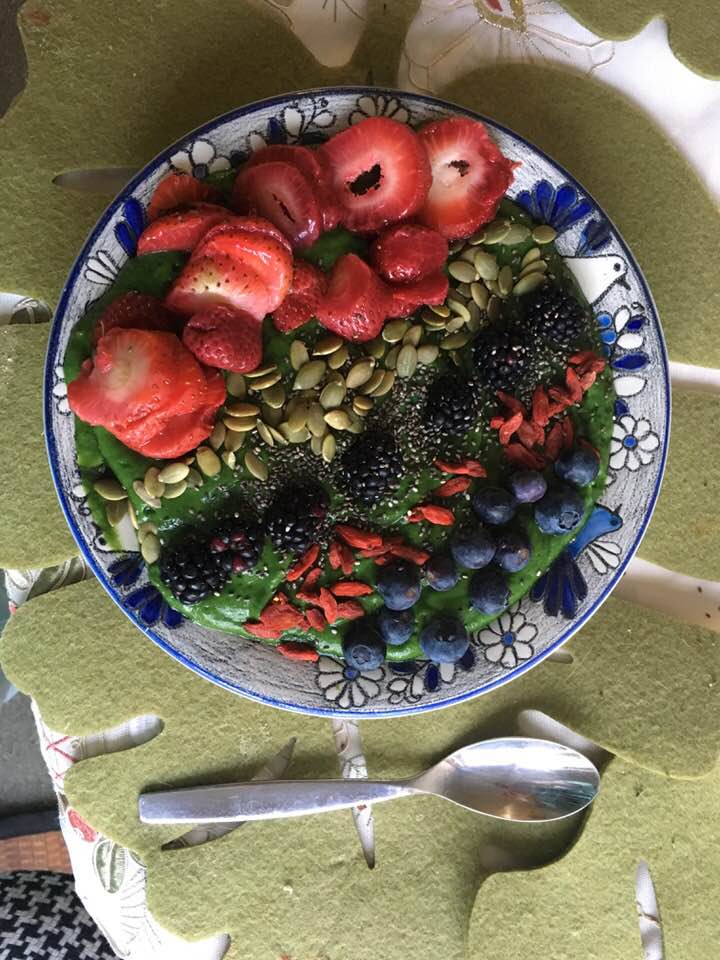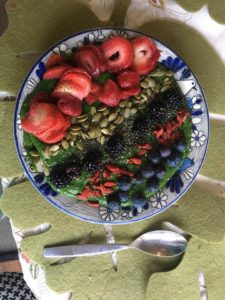In my continuing mission to introduce more greens into my breakfasts (previous attempts included lots of smoothie bowls) I came up with a wonderful solution that can be made ahead and provide convenient, protein- and nutrient-rich breakfasts for the whole week. Kuku Sabzi is a Persian dish of dense greens and herbs bound with egg. My version substitutes the egg with chickpea flour, plant milk, and olive oil, and incorporates lots of herbs and spices. You can make lots of variations, depending on the greens you have on hand. This version uses Stonehouse spice mixes, which I find incredibly useful.
Ingredients:
- 8 big collard leaves
- 8 big kale leaves
- 100g or so of spinach or baby spinach
- 1/2 cup parsley
- 1/2 cup cilantro
- 1/2 cup chickpea flour
- 1/2 cup unsweetened plant milk
- 2 tbsp olive oil
- 1 heaping tbsp OMG (or your own combination of onion powder, garlic powder, and salt)
- 1 heaping tbsp Aglio Olio (or your own Italian seasoning)
Process:
First, remove the stems from the collards and kale and tear into pieces. Place all the greens and herbs in your food processor and chop into tiny pieces–you may need to do this in batches.
Preheat oven to 350 Fahrenheit. Lightly oil a shallow, rectangular baking dish (I use this 9”x12” one, but anything will do) and line with parchment (don’t forget the parchment–this will pay off dividends at the end.)
Next, place all the chopped greens in a bowl. In a separate bowl, mix the chickpea flour, plant milk, olive oil, and spices, into an eggy-textured mixture. Transfer the mixture into the bowl with the greens and mix well with your hands, until the mixture binds the greens together. Then, transfer the lot into the baking dish. Using damp hands, push the mixture into the bottom of the dish, until it is very dense and covers the whole dish. Flatten the top.
Bake for about 45 mins, or until the kuku has solidified. Remove from oven, lift using the parchment, and gently place on a cooling rack. After it cools a bit, you can cut it into squares, triangles, or any other shape, and store in the fridge. This is delicious when eaten cold, straight from the fridge, or dipped into this fabulous dressing.










